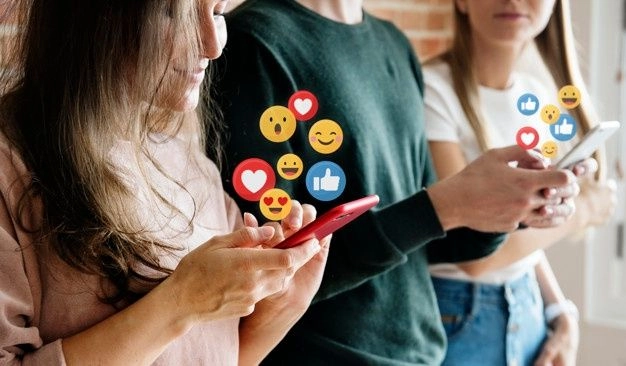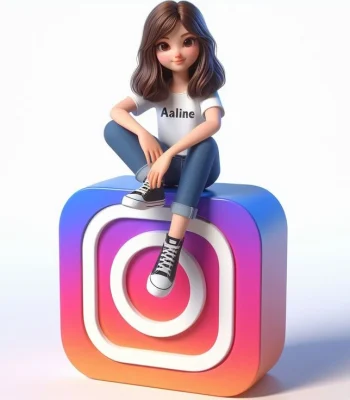The Science of Viral Content: What Makes a Post Explode?
Among the enormous sea of digital content, very few things capture our attention like a viral post. Whether it is a funny meme, an inspiring video, or an outrageous challenge, the virality of content spreads like wildfire across social media platforms. What makes a post really explode in popularity, though? While there are many individual secret ingredients to guaranteed formula virality, several key elements contribute to a post’s success.
It requires a thorough understanding of the science behind viral content to create posts that people will resonate with. A blog post explaining the case in psychological terms, describing the bare essentials of why a post becomes viral, and including some case studies on examples from India may be necessary for the project. That would make for a perfect beginning with a good understanding of all knowledge that you would use for producing inspirational content, thus bringing imagination int

Psychology of Viral Content
It’s essentially psychological content. Usually, sharing is built on deep emotional response. Posts that evoke an emotional response, whether it’s about joy, surprise, anger, or nostalgia, are usually shared more easily. This emotional engagement becomes the driver of virality.
For instance, Consider how humor can really be a connecting factor. Sometimes, an amusing post gets shared with friends and relatives in order to break ice among people, and its influence will be magnified manyfold. Similar is the case with the content when people can connect with the piece on a personal basis. When they see some situation that relates to theirs, they tend to forward the same because it turns out to be relatable for them.
Other critical things are social currencies: the desire to share interesting or exclusive content because that content makes one look good or be in the know is huge. The share function of the platform thus allows an individual to send out messages about his identity and interest to his friends’ groups.

Do you sometimes see how a person or a video just seemingly overflows overnight? It is interesting when you see accounts with the same number of followers, suddenly rising to millions of views in their reels. Would that be a strategy designed this way, or sometimes you just get lucky?
And sometimes, a perfect song becomes the background score of thousands of reels where the song becomes an anthem to trends and challenges. It is often easy to think that it is planned virality, but in many cases, it is the right mix at the right moment.
Core Components of Viral Content
Now that we established the psychological foundations of viral content, let’s look into its core components. Creating a viral post will involve a few factors harmoniously working in unison.
- First, a great headliner is important: Your headline has to be interesting so that it can pique interest and curiosity. When you have an interesting headliner, people are prompted to read more. There is a high chance the post will be shared through using techniques such as creating a sense of urgency or using humor. For instance, titles like “Prepare to be Surprised by What Follows!” trigger readers’ curiosity to learn more.
- But most important are the visuals: when people’s attention is shorter and less deep, something catching an eye can mean a world of difference. It usually attracts more eyes to click on the visuals compared to text, especially as this content can then be easily shared across many networks and gets even more noticed. Often, a fabulous photo or an interesting image with an intriguing thumbnail may well mean the difference between the totally ignored post and that attracting widespread attention.
- Another important aspect is storytelling: People respond to stories. If the post narrates a compelling story, it captures people’s attention and makes it more personal. Whether a personal story or a work of fiction, incorporating storytelling into your content can increase its shareability. The emotional curve of a story is bound to attract readers in; hence, they care about what happens next, which is a great incentive to share it with others.
- A clear call to action must be added: Encourage readers to share, comment, or tag friends to create more engagement. When people feel invited to participate, they will share the content in their networks. Generate excitement that inspires readers to find out more.
In order to further illustrate the elements of viral content, let us now look at some significant case studies. These cases depict how different strategies lead to incredible reach and engagement.
A very interesting example of viral content in Kerala is a video that features a man kicking a football into a waterfall in Malappuram. Such a simple act proved to be very captivating for many, garnering a mind-boggling 553 million views, 633,000 shares, and 42,300 comments on Instagram.
This post is an example of how a moment, be it relatable or visually striking, can amass millions of followers, irrespective of the creator’s follower count. The stunning view of the waterfall and the action of kicking a football into the waterfall made it shareable and engaging, thus causing its popularity to be explosive. This case study represents how unpredictable virality is and how the simplest content can resonate deeply with an immense audience.
Another one is, the Ice Bucket Challenge was an attempt to raise awareness about ALS. This viral campaign was a challenge that asked people to douse themselves with ice water and challenge others to do the same while donating for the cause. Video content combined with social sharing made it a global movement that raised millions for research. The charity cause and appealing format of the challenge magnified sharing and participation; it’s an excellent case of how social causes create virality. That the community had a common goal- to make people aware- played a big part.
Another good case study can be derived from the Netflix marketing strategy for “Stranger Things”. Using nostalgia and creating such great visuals, Netflix brought the 1980s alive, appealing to a vast audience. Social media was also cleverly used by using engaging hashtags and very visually striking content that helped the show gain such popularity. The trailer itself was enough to create huge buzz; it was full of references to classic ’80s movies and pop culture. This is an example of how tapping into collective nostalgia can foster connections and encourage sharing. he Factors That Drive Audience Engagement
Understanding the factors that drive audience engagement is crucial in the viral content analysis. Several key elements influence why audiences gravitate toward certain posts:
Targeted ads, influencer partnerships, and user-generated content utilized made this a textbook case of successful digital marketing.
- Relatability: This is the content that the audience can relate to as they can express their feelings or experiences through it. It is very likely that individuals share a post if there is some part of their life reflected in that post.
- Entertainment Value: The posts should entertain the audience. A fun, creative, or even exciting post can capture many audience members. Viral content usually forms a delightful distraction; therefore, people share those with their friends.
- Motivational Stories: Fabulous stories inspire many people. Motivational message hits the audience at one level, as it prompts people to share the encouraging message and inspiring story.
- Visual Attractiveness: The more engaging visual appeal of the post will attract views and higher sharing. With rich pictorial images, gripping graphics, and compelling videos, the chances of being a viral hit are multiplied in a big way.
Relevance and Timeliness: The content that shares the news or trending topic tends to get more shares. Cultural phenomena knowledge will enable the creators to relate to the audience on a relevant level.
Conclusion: Harnessing the Power of Virality
Sometimes, making viral content feels like a mirage, but understanding the science of viral content makes one more likely to be successful. Emotional engagement, relatable storytelling, compelling visuals, and strategic promotion are all factors that will determine whether a post is likely to go viral or not.
Of course, there is no apparent formula to predict what would explode, but psychological principles and successful case studies are there, and that becomes a blueprint that content creators can work toward. The more resonating content you create for your audience, the better you are in crafting posts that will catch on and spread like wildfire.
Remember that going viral often relies on connecting authentically with your audience. In the creation of attention-grabbing content that fosters community and conversation, authenticity and engagement will definitely take the forefront.
So go ahead, experiment, and watch your content take off. Virality is closer than you think!